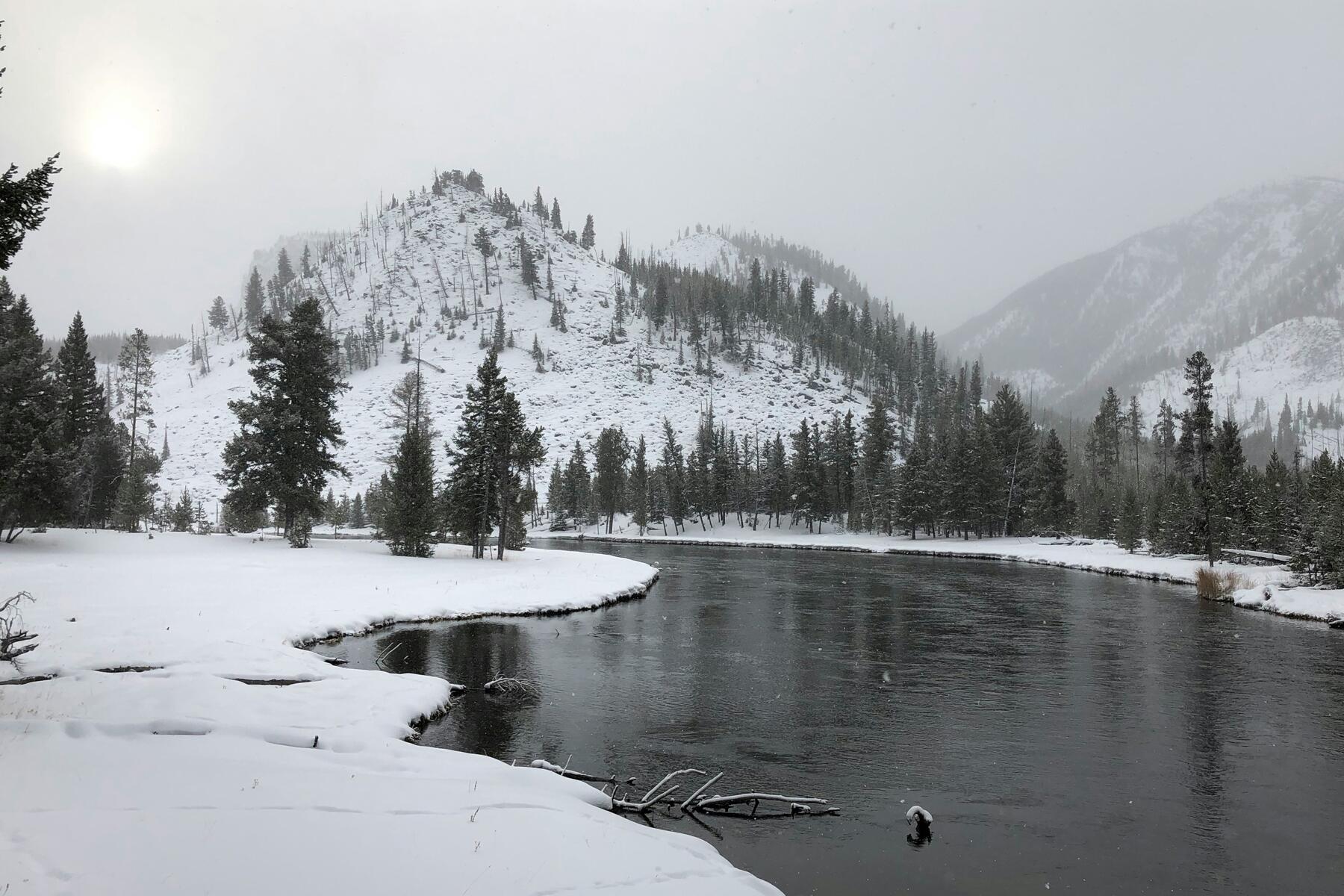Ghost towns and gold mines.
You know that feeling you get when you’re in a place that was inhabited by people in a different era–eerie, chilling, and marvelous? It’s the feeling of history smacking you in the face and reminding you of your mortality. That’s how each of these ghost towns feel–whether people live there now or they’re totally deserted. You can almost summon up the miners and their grit during this time of discovery, hardship, and near-lawlessness. Some of these places are in a state of “arrested decay,” some are off-the-beaten-path, and some push the kitschy, but they were all mining spots more than a century ago and many of them yielded riches for the adventurous.
Top Picks for You
The Nadeau-Magnolia Mine
WHERE: California
At the southern end of the Eastern Sierras, this abandoned gold mine is in the middle of nowhere in the Indian Wells Valley. Take winding dirt roads past hundreds of Joshua Trees to get to it. The settlement was owned by the Siebert family, and the family’s abandoned cabin still stands, but don’t trust the floorboards. On the walls, there are aging photos of the family. Nearby, a rusted car and truck are riddled with bullet holes by broken mine equipment. Up the hill about three-quarters of a mile is the mine shaft with a red warning sign: “Danger.” Usually the mine is deserted and the surrounding area is so quiet you can hear only the birds singing.
The Burro Schmidt Tunnel
WHERE: California
This 2,000-foot long tunnel was drilled by William “Burro” Schmidt, who took more than 30 years to do it using a chisel and dynamite. He dug the tunnel at the turn of the century so that he could transport his mining finds to his living quarters. It’s out of the way–off Highway 14 on bumpy dirt roads–and hard to get to, but worth it once you make it there. The tunnel is short enough to take a toddler through but long enough to feel like an adventure. Bring a headlamp, batteries, and lots of water.
Recommended Fodor’s Video
Randsburg
WHERE: California
Randsburg is a living ghost town of about 70 people. It has a two-cell jail, a general store where you can buy delicious milkshakes and books about desert living, the White House Saloon that serves hamburgers, a shuttered post office, a hotel, and not much more. The mines in the surrounding areas are barricaded with danger signs. Gold was discovered here in 1895, and after that, the town survived a series of fires. The tiny Rand Desert Museum, a trove of information and rocks and gems, is open on Saturdays.
Calico
WHERE: California
Calico, near Barstow, was discovered in 1881 and grew into 500 mines and 3,500 people. Over a dozen years, the mines produced more than $20 million in silver ore. Then in the 1890s, silver lost value and people left. Sixty years later, Walter Knott purchased the town and restored many of the buildings. Now it’s a county park where you can tour the Maggie Mine that was in operation in the 1880s, take an eight-minute train ride around the hill and hear the history of the land, and get a burger and coffee at the Old Miner’s Cafe.
Bodie
WHERE: California
This ghost town northeast of Yosemite is so well preserved that it’s hard not to gawk. Gold prospectors moved there in the 1870s after a mining cave-in revealed riches. In the coming years, Bodie boomed to more than 10,000 people and 60 saloons. It was prosperous and notoriously lawless. Today, only 5 to 10 percent of the original buildings stand (the others were destroyed in two fires). Enter by car through the state park’s booth and pay a fee to see streets full of old buildings with weathered sideboards. Peek through the windows of the general store, full of rusty cans left as it was when it was abandoned more than a century ago.
Rhyolite
WHERE: Nevada
On the outskirts of Death Valley, Rhyolite was a gold rush town built between 1904 and 1907. By 1905, it had running water, telephone lines, and a bank. At its peak, it had four public swimming pools,18 general stores, 50 saloons, and three railroad lines running into the town. Today, the site is managed by the Bureau of Land Management. You can see the crumbling train depot and the bank. One of the most interesting attractions is the Tom Kelly Bottle House, which was restored in 1925 by Paramount Pictures for the films Air Mail and Wanderers of the Wasteland. The outer walls of the three-room house were made with more than 50,000 glass bottles.
Virginia City
WHERE: Montana
Twenty miles west (90 miles by road) of Yellowstone National Park, you’ll find Virginia City, a living ghost town with a population of about 100. The town saw its heydey earlier than the other gold towns–a few campers discovered gold dust in Alder Gulch in 1863. By 1864, Virginia City had more than 10,000 residents. Known as the social city, people attended balls and dances and social clubs. In 1875, the Northern Pacific set up its route and left out Virginia City, so people started to leave. Now it’s owned by the state and maintained by the Montana Heritage Commission. You can see reenactments of legends during the vigilante era, plays at the old opera house, and comedy shows at the old brewery.
St. Elmo
WHERE: Colorado
As far as authentic ghost town goes, St. Elmo is the real deal. The town, nestled in the Sawatch Range in Chaffee County, was founded in 1880 by miners in search of both gold and silver. At its peak in the 1890s, there was a general store, a town hall, five hotels, and a schoolhouse. The Denver, South Park & Pacific railroad ran through the town, but the tracks were abandoned in 1922. Today, you can see outhouses, shuttered homes, and the in-tact town hall, but the general store is only open during the summer months. Go to St. Elmo to get some Colorado history, enjoy the quiet, and feed the chipmunks.
Ashcroft
WHERE: Colorado
Once home to two newspapers, 20 saloons, and a school, Ashcroft attracted silver prospectors in the 1880s. At one point, the mines produced 14,000 ounces of silver to the ton. But by 1885, all the silver had been mined and most people left except for a devoted few. In 1948, World War II veteran Stuart Mace brought his family and dog sled operation to Ashcroft. Mace and his huskies had an appearance in the 1950s TV series Sgt. Preston of the Yukon, filmed in Ashcroft. Only 11 miles from Aspen, you can take a guided tour in the summer of several buildings preserved by the Aspen Historical Society, including the hotel, livery stable, and a couple of saloons. In the winter, the buildings are closed.
Bannack State Park
WHERE: Montana
Bannack is considered one of the best-preserved ghost towns in the country. In 1862, gold was discovered and within a year the population peaked at around 3,000 people. Bannack is best known for a story about a group of vigilantes who allegedly hanged the sheriff and his two deputies because the sheriff’s outlaws were murdering and robbing miners. Every other year, a group of actors reenact the hangings in a play called “Men Do Your Duty”–the next show is January 20, 2020. Bannack continued to survive until the 1930s when World War II hit. By the 1950s, most people left. That’s when Montana made Bannack a state park to preserve its history. Today are more than 60 structures you can walk through, including the church, the jail, and the school.
Goldfield
WHERE: Arizona
Goldfield is where gold was discovered in 1892 and over the next 30 years, it had two lives when the post office opened, shuttered, reopened, and closed again. In its first life, newcomers built saloons, a boarding house, a general store, a blacksmith shop, a brewery, and a schoolhouse. Between 1910 and 1926 it was revived on and off before dying again. Then, in the 1980s, a couple bought the old mill site and reconstructed a mining tunnel. They later built a general store, a saloon, and the Goldfield Museum. Today, you’ll see people in period costumes, along with horses and wagons. It may be a far cry from Bodie and Bannack, authentic ghost towns in “arrested decay,” but it’s still a fun outing for the family.
Nighthawk
WHERE: Washington
Nighthawk, located in Okanogan County, was a tent town for prospectors in the 1860s that turned into a boom town in the early 1900s. It had a hotel, schoolhouse, mining office, a mill, and a house of “ill repute.” It also had a railroad line running through it. The most famous of the mines was Ruby Silver Mine. People left the town when silver lost its value and now it’s a ghost town, but many of the buildings are still standing.
Kennecott
WHERE: Alaska
It may have been mostly deserted 50 years ago, but don’t call this town a “ghost town”–the handful of residents who live there year-round may be offended. At the turn of the century, the mining company here processed more than $200 million worth of copper and employed more than 600 people in the mines and milltown. The town included a hospital, a school, a skating rink, and a recreation hall. In 1938, the mine was shuttered. Now Kennecott is maintained by the National Park Service, which has 15 to 20 staff members on site in the summer. If you visit in the winter, the visitor center is closed and the only access to Kennecott is walking or skiing the five miles from McCarthy.
Garnet
WHERE: Montana
This town hit it rich when gold was discovered in 1897 in the Nancy Hanks mine. A year later, Garnet had a population of more than 1,000 and 13 saloons, four hotels, livery stables, two barber shops, and a butcher shop, among other buildings. But by 1905, the population dwindled to 150. A fire in 1912 in the business district also caused people to leave. By the 1940s, Garnet was a ghost town. Now it’s managed by the Bureau of Land Management and the Garnet Preservation Association. You can camp as long as it’s not within half a mile of Garnet, and there are many hiking trails nearby. In the winter, you can only get to Garnet with a snowmobile or cross-country skis.
South Pass City
WHERE: Wyoming
Prospectors discovered gold here in 1867. By the next year, a vein was found in what turned into the Carissa Mine and shortly after, 1,000 people moved in. South Pass City is known as a mining town, but it’s also surprisingly known as the birthplace of the women’s suffrage movement. Saloon and mine owner William Bright introduced the first women’s suffrage bill in Wyoming’s First Territorial Legislature and it passed in 1869. After the Depression, the town stopped humming. Now run by the state, you can tour the dance hall, restaurants, and jail. In July at a festival called the Gold Rush Days, you can catch a vintage baseball game or do some gold panning.




